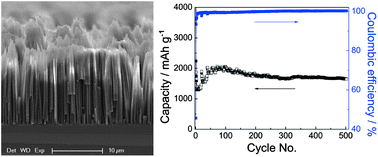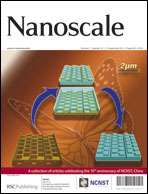Anode materials play a key role in the performance, in particular the capacity and lifetime, of lithium ion batteries (LIBs). Silicon has been demonstrated to be a promising anode material due to its high specific capacity, but pulverization during cycling and formation of an unstable solid-electrolyte interphase limit its cycle life. Herein, we show that anodes consisting of an active silicon nanowire (Si NW), which is surrounded by a uniform graphene shell and comprises silicon carbide nanocrystals, are capable of serving over 500 cycles in half cells at a high lithium storage capacity of 1650 mA h g−1. In the anodes, the graphene shell provides a highly-conductive path and prevents direct exposure of Si NWs to electrolytes while the SiC nanocrystals may act as a rigid backbone to retain the integrity of the Si NW in its great deformation process caused by repetitive charging–discharging reactions, resulting in a stable cyclability.
You have access to this article
 Please wait while we load your content...
Something went wrong. Try again?
Please wait while we load your content...
Something went wrong. Try again?


 Please wait while we load your content...
Please wait while we load your content...